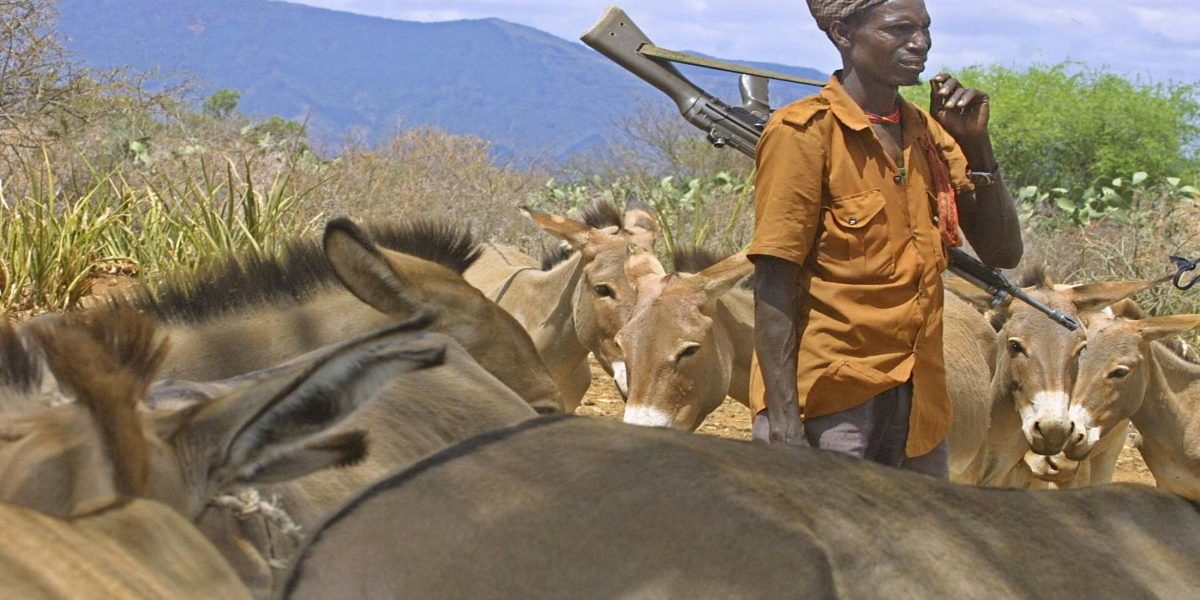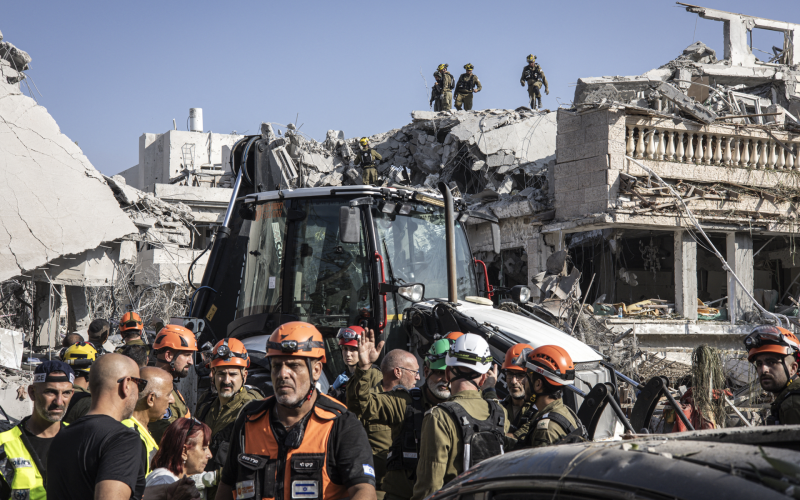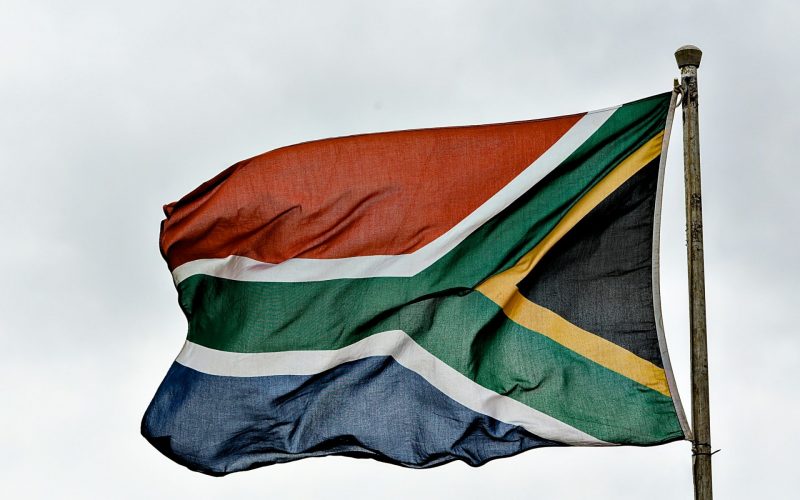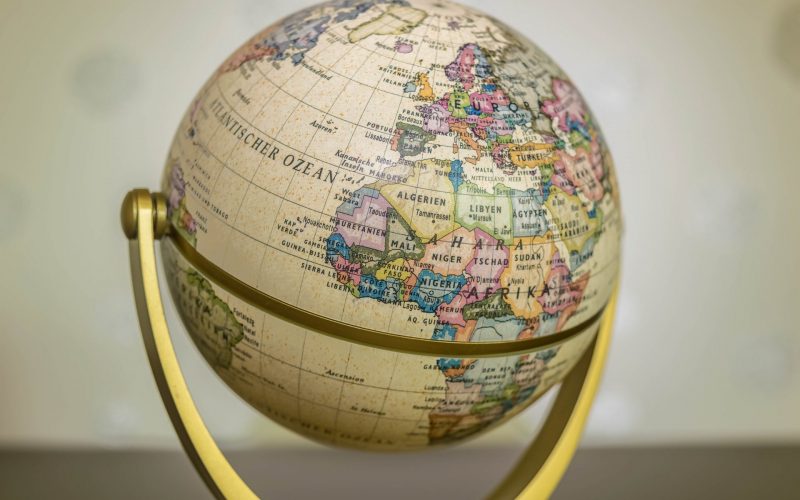Recommendations
- States in the Global North need to deliver on climate finance commitments, with an emphasis on climate change adaptation measures in the Global South.
- African countries should prioritise climate change adaptation strategies and their implementation with urgency.
- Climate change adaptation in Africa needs to be implemented in a conflict-sensitive manner, especially in fragile contexts, taking other contributing conflict factors into account.
- Evidence-based adaptation measures should be informed by affected communities, as well as tailored to the contextual needs of these communities.
Executive summary
Africa is one of the areas that are most vulnerable to both climate change and conflict. Despite contributing very little to the changing climate, the continent still bears the brunt of the resultant impacts. Some studies and media coverage have predicted an increase in violent conflict in African countries as a result of climate change. While there is consensus about climate change’s being a risk multiplier, and therefore having the potential to exacerbate existing problems, the link between climate change and violent conflict remains highly complex, contextual and often indirect. Together with other conflict factors, climate change can undermine human security in vulnerable communities in Africa. This can happen in different ways, such as changes in precipitation and temperature, or extreme weather events such as droughts and floods, which can result in resource scarcity, forced migration, land degradation or infrastructure issues. Thus, climate change adaptation strategies are crucial in order to protect communities in Africa, particularly as climate impacts are already visible. Such strategies require a conflict-sensitive approach, specifically in communities where other destabilising factors could contribute to violence.
Introduction
In contrast to previous debates on climate change, contemporary discussions emphasise the impacts that climate change has on human security.1Tobias Ide, “The Impact of Environmental Cooperation on Peacebuilding: Definitions, Mechanisms, and Empirical Evidence”, International Studies Review (2018): 1–20. Since 2007 it has been brought to public attention that the effects of a warming climate, such as more intense storms, floods and droughts, have severe repercussions for the well-being of communities, especially in the more vulnerable areas of the globe.2RK Pachauri and A Reisinger, eds., Climate Change 2007: Synthesis Report – Contribution of Working Groups I, II and III to the Fourth Assessment Report of the Intergovernmental Panel on Climate Change (Geneva: Intergovernmental Panel on Climate Change, 2007). The Global South, and the African continent in particular, is one of the most vulnerable areas.3RK Pachauri and LA Meyer, eds., Climate Change 2014: Synthesis Report – Contribution of Working Groups I, II and III to the Fifth Assessment Report of the Intergovernmental Panel on Climate Change (Geneva: IPCC, 2014). Many African countries are both highly vulnerable to climate change and show high levels of conflict fragility.4Richard Matthew and Anne Hammill, “Peacebuilding and Adaptation to Climate Change”, in Assessing and Restoring Natural Resources in Post-Conflict Peacebuilding, eds. David Jensen and Steven Lonergan (London: Earthscan, 2018), 268–282. Both scholars and the mainstream media predict an increase in violent conflict in African countries in times of drought, for example, as a result of climate change.5Pachauri and Meyer, Climate Change 2014. Some go as far as to warn about climate wars or water wars.6Harald Welzer, Climate Wars: Why People Will Be Killed in the Twenty-First Century (Cambridge: Polity Press, 2008).
While there is consensus about climate change being a risk multiplier and therefore having the potential to exacerbate existing problems, it is still unclear to what extent that is the case. Furthermore, if, how, or when climate change can contribute to or even spark conflict remains highly contextual. It may be tempting to fall into the trap of oversimplifying the matter by drawing alarmist conclusions. At the same time, that does not mean climate change does not pose a serious risk to peace and stability in Africa. Instead, it is a question of how other political and societal factors also play a role.
Climate change and conflict in Africa
Together with other factors that contribute to conflict, climate change can undermine human security in vulnerable communities in Africa. This can happen in different ways, such as through changes in precipitation and temperature, or extreme weather events, such as droughts and floods. These, in turn, can result in resource scarcity, forced migration, land degradation or infrastructure problems, to name a few.7Jürgen Scheffran, Janpeter Schilling and Peter Michael Link, “Climate Change and Conflict in Africa”, in Oxford Research Encyclopedia of Climate Science (Oxford: Oxford University Press, 2019). Existing security threats can be multiplied and worsened through these different pathways. As a result, the potential for conflict increases. At the same time, political, economic and social conflict risks cannot be ignored, as they have an immense effect on conflict potential. The link between climate change and violent conflict is therefore highly complex and often indirect.8Scheffran, Schilling and Link, “Climate Change and Conflict in Africa”. These complexities have been examined extensively for the African continent, with the conclusion being that it is considerably vulnerable to both violent conflict and the impacts of climate change.
Compared to other regions in the world, Africa has contributed very little to anthropogenic climate change, as its relatively low economic development and energy consumption have led to only about one-tenth per capita of greenhouse gas emissions compared to Organisation for Economic Co-operation and Development countries.9Charlène Cabot, Climate Change, Security Risks and Conflict Reduction in Africa (Berlin & Heidelberg: Springer, 2017). Owing to this imbalance, or climate injustice, it seems only fair to call on the Global North for stronger mitigation efforts and financial support for adaptation efforts.
Climate change adaptation strategies are crucial in order to protect communities in Africa, as some of the worst impacts are already visible. Where institutions are weak and infrastructure is poor, humanitarian organisations and peacekeeping missions play an important role. Climate impacts make their work increasingly difficult owing to more extreme weather conditions, which affect their ability to respond quickly.10Farah Hegazi, Florian Krampe and Elizabeth Seymour Smith, “Climate-Related Security Risks and Peacebuilding in Mali” (Policy Paper 60, Stockholm International Peace Research Institute, Stockholm, April 2021). Yet there have been positive and promising developments. Countries committed to further climate mitigation and adaptation contributions at the COP26 in November last year.11UN Climate Change, “The Glasgow Climate Pact – Key Outcomes from COP26”, https://unfccc.int/process-and-meetings/the-parisagreement/the-glasgow-climate-pact-key-outcomes-from-cop26 Moreover, at the AU Peace and Security Council (PSC) meeting in Addis Ababa on 26 November 2021, AU member states discussed the connection between climate change, peace and security, acknowledging the need for an informed climate–security–development nexus in Africa.12AU Peace and Security Council, “1051st Meeting Communiqué: Climate Change and Peace and Security – The Need for an Informed Climate-Security-Development Nexus for Africa”, November 26, 2021. Thus, the issue of climate security remains on the agenda, perhaps more than ever. Nonetheless, these developments need to be matched with urgent international action based on local needs. This requires African countries to adopt climate adaptation and resilience strategies.
Although an increase of 10–20% in violent conflicts has been linked to a 0.5°C warming, it is still difficult to establish a direct connection to violent conflict.13Marshall Burke, Solomon M Hsiang and Edward Miguel, “Climate and Conflict”, Annu. Rev. Econ. 7 (2015): 577–617. Nevertheless, changes in climate can certainly multiply the risk of conflict.14Scheffran, Schilling and Link, “Climate Change and Conflict”. There is already relevant evidence in various African regions. As with any crisis, such as the COVID-19 pandemic, the climate crisis tends to expose and magnify existing tensions, visible, for example, in the Horn of Africa, the Sahel, the Lake Chad Basin and Southern Africa.15Scheffran, Schilling and Link, “Climate Change and Conflict”. In addition, while some regions may be at an increased risk of violence because of the impacts of climate change, others may not, despite being extremely vulnerable themselves to climate change effects. Additionally, climate change and conflict can be mutually reinforcing, ie, climate change can contribute to a society’s vulnerability to conflict and, on the other hand, conflict can put societies at increased risk of climate vulnerability.16Tobias Ide and Jürgen Scheffran, “On Climate, Conflict and Cumulation: Suggestions for Integrative Cumulation of Knowledge in the Research on Climate Change and Violent Conflict”, Global Change, Peace & Security 26, no. 3 (2010): 1–17. This vicious cycle makes it difficult to find a longlasting solution, as both problems are complex in themselves.
North African countries such as Libya, Algeria, Morocco, Tunisia and Egypt are at risk of violent conflict since they have experienced violence in the past, especially since 2011.17Uppsala Conflict Data Program, “UCDP Armed Conflict Dataset: Version 21.1”, 2021. These violent outbreaks were affected by other conflict factors, such as political marginalisation and ethnic diversity.18Further conflict drivers in this specific context are urbanisation, migration, social status and economic strategies. See Martin Rössler et al., “Demographic Development in Southern Morocco: Migration, Urbanization, and the Role of Institutions in Resource Management”, in Impacts of Global Change on the Hydrological Cycle in West and Northwest Africa, eds. Peter Speth et al. (Berlin and Heidelberg: Springer, 2010), 305–314. Yet some studies suggest that conflict may have occurred through the food–water–energy nexus, creating tensions because of price hikes and food shortages (ie, food insecurity).19Nacira Chourghal et al., “Climate Change in Algeria and Its Impact on Durum Wheat”, Regional Environmental Change 16, no. 6 (2016): 1623–1634. For example, Egypt’s largest wheat supplier, Russia, experienced droughts at the same time as China (2010–2011), which is the largest wheat producer and consumer globally. This probably contributed to higher food prices, financial struggles and further negative effects on livelihoods, destabilising the North African region significantly and providing breeding grounds for the Arab Spring in 2011.20Francesco Femia, Troy Sternberg and Caitlin Werrell, “Climate Hazards, Security, and the Uprising in Syria and Egypt”, Whitehead Journal of Diplomacy and International Relations 16, no. 71 (2014). While protests started in Libya, Tunisia and Egypt, the conflict escalated into a civil war in Syria, followed by a global refugee crisis. These tensions and conflicts arose during a period of extreme drought (2006–2010), which further contributed to the destabilisation of the region.21Jan Selby et al., “Climate Change and the Syrian Civil War Revisited”, Political Geography 60 (2017): 232–244. Thus, with globalisation in the mix, the complexity of so-called ‘climate conflicts’ is ever more apparent.
It has been claimed that the conflict in Darfur was one of the first ‘climate wars’ – ie, a result of environmental change.22Welzer, Climate Wars. Others warn against oversimplifying the conflict, and primarily blame the Sudanese government, which may have used climate change as a means of distraction when discussing the Darfur conflict.23Harry Verhoeven, Water, Civilisation and Power in Sudan: The Political Economy of Military-Islamist State Building (Cambridge: Cambridge University Press, 2015). Sudan’s civil war was another example of a complex conflict situation influenced by political and institutional issues, identity politics and socio-economic factors exacerbated by a drought.
Currently, the media and the research community mostly focus on the climate–conflict link in Kenya when referring to Eastern Africa, particularly in terms of small-scale violent conflicts between pastoral groups.24Scheffran, Schilling and Link, “Climate Change and Conflict”. Most research identifies an indirect link between droughtinduced resource scarcity and violent conflict.25Scheffran, Schilling and Link, “Climate Change and Conflict”. Conversely, some data suggests that ‘[r] aiders like to attack during wet years because of high grass, strong animals, dense bush to hide in and the availability of surface water, which makes it easier to trek with the animals’.26Karen Margaret Witsenberg and Wario Roba Adano, “Of Rain and Raids: Violent Livestock Raiding in Northern Kenya”, Civil Wars 11, no. 4 (2009): 723. Other studies of the climate–conflict–nexus in both East and West Africa warn that, while droughts contribute to violence, this is not a simple cause-and-effect relationship between resource scarcity and conflict.27Scheffran, Schilling and Link, “Climate Change and Conflict”. Instead, violence in connection with resource scarcity strongly depends on who has access to and control over those resources.
Southern Africa and climate change
In the past 40 years, the SADC region has experienced more than one-third of all weatherrelated disasters on the continent, with an impact on 177 million people in total and causing $14 billion worth of damage.28Aimée-Noël Mbiyozo and Ottilia Anna Maunganidze, “Southern Africa’s Most Vulnerable Last in Line for Climate Adaptation Funding”, Daily Maverick, November 2, 2021. According to the Intergovernmental Panel on Climate Change, climate change will continue to increase the intensity, frequency and duration of extreme and slow-onset climate effects. Although Southern Africa has contributed little to anthropogenic climate change, it is one of the most impacted areas in the world.29Pachauri and Meyer, Climate Change 2014. This injustice is further reflected in the population, as those communities least equipped to respond to climate impacts are the most exposed to them. In spite of efforts in the form of international and national adaptation strategies, SADC member states have not prioritised these adaptation measures or their implementation.
According to the South African Department of Environment, Forestry and Fisheries, the country’s climate is already becoming drier, and it will be exposed to more extreme climate change in the future. This will impact certain sectors significantly, including agriculture, water resources and human health.30Department of Environmental Affairs, Long-Term Adaptation Scenarios Flagship Research Programme (LTAS) for South Africa (Pretoria: DEA, 2013). Specifically, limited water availability has severe effects on South African society. Climate change is expected to alter the seasons, with a longer dry season, heavier rainfall events concentrated in the east and northeast of the country, and an increasingly dry western region.31DEA, Long-Term Adaptation Scenarios. The former Department of Environmental Affairs is now part of the Department of Environment, Forestry and Fisheries.
Despite being a post-conflict society, South Africa does not fall under the category of ‘fragile contexts’. However, it still battles the legacy of colonialism and apartheid, as well as severe social pressures related to unemployment, poverty, inequality and low growth. Additionally, droughts have caused extreme water scarcity in certain areas, such as Cape Town in the Western Cape and Nelson Mandela Bay in the Eastern Cape. The drought in the Western Cape, which peaked in 2018, was one of the worst on record in the region.32Craig Welch, “Why Cape Town Is Running Out of Water, and Who’s Next”, National Geographic, March 5, 2018. Researchers warn that droughts in the Western Cape will be more intense and more frequent in the future owing to climate change.33Myra Naik and Babatunde Abiodun, “Projected Changes in Drought Characteristics over Western Cape, South Africa”, Meteorological Applications 27, no. 1 (2019). Yet, apart from a single incident of interpersonal violence at the Newlands Spring in Cape Town, no water-related violence was reported.34“Tempers Flare at Cape Town Water Collection Point”, eNCA, January 31, 2018.
Events in Nelson Mandela Bay highlight who bears the brunt of a water crisis. In late January 2021 taps ran dry in the municipality, impacting schools in the area. There was no drinking water for pupils or staff, and they could not use bathrooms or wash their hands. Dam levels dropped to 19% and reservoirs struggled to recover.35Thamsanqa Mbovane, “Water Crisis Disrupts Schools in Nelson Mandela Bay”, GroundUp, January 26, 2022.
In addition, South Africa has been affected by regular protests over service delivery. In 2018, during the peak of the Western Cape drought, protests increased to 237 from 173 in 2017 nationally, including violent protests. The Eastern Cape (20%) and Western Cape (17%) were the major contributors, followed by Gauteng (16%), KwaZulu-Natal (14%) and the Free State (10%). The North West (8%), the Northern Cape (8%), Limpopo (4%) and Mpumalanga (3%) were minor contributors.36Karen Heese, “3 Key Trends from 2018’s All-Time Service Delivery Protest Record”, Municipal Data and Intelligence, 2019; Bethuel Sibongiseni Ngcamu, “Exploring Service Delivery Protests in Post-Apartheid South African Municipalities: A Literature Review”, The Journal of Transdisciplinary Research in Southern Africa 15, no. 1 (2019): 1817–4434. Although violent service delivery protests may be the result of multiple factors, such as corruption and resource mismanagement, it is important to explore to what extent droughts and water scarcity affect the nature and dynamics of violence. As climate change will result in more frequent and severe droughts in the future, the link between violence and water scarcity in South Africa should also be considered. This may allow for the development of conflict-sensitive climate adaption strategies and interventions.
Conclusion
Scientists have warned that climate change does not happen gradually – instead, abrupt and irreversible climate change impacts result once a certain temperature threshold is exceeded. This so-called tipping point could affect not only the adaptation potential of human society but also human security and, therefore, people’s lives.37Pachauri and Meyer, Climate Change 2014. Hence, it is necessary to avoid dangerous climate change in order to prevent potential violent conflict. Conflict prevention measures need to see climate change adaptation strategies developed and implemented, since the consequences of climate change are already visible. Yet, alarmist prognoses, as well as a tendency to frame climate change exclusively as a security threat, should be avoided. Equally, climate change and the role it can play as a threat multiplier should not be denied or trivialised. The climate–conflict nexus is a highly contextual issue and requires tailored, evidence-based solutions.
Acknowledgement
SAIIA gratefully acknowledges the support of SIDA for this publication.







